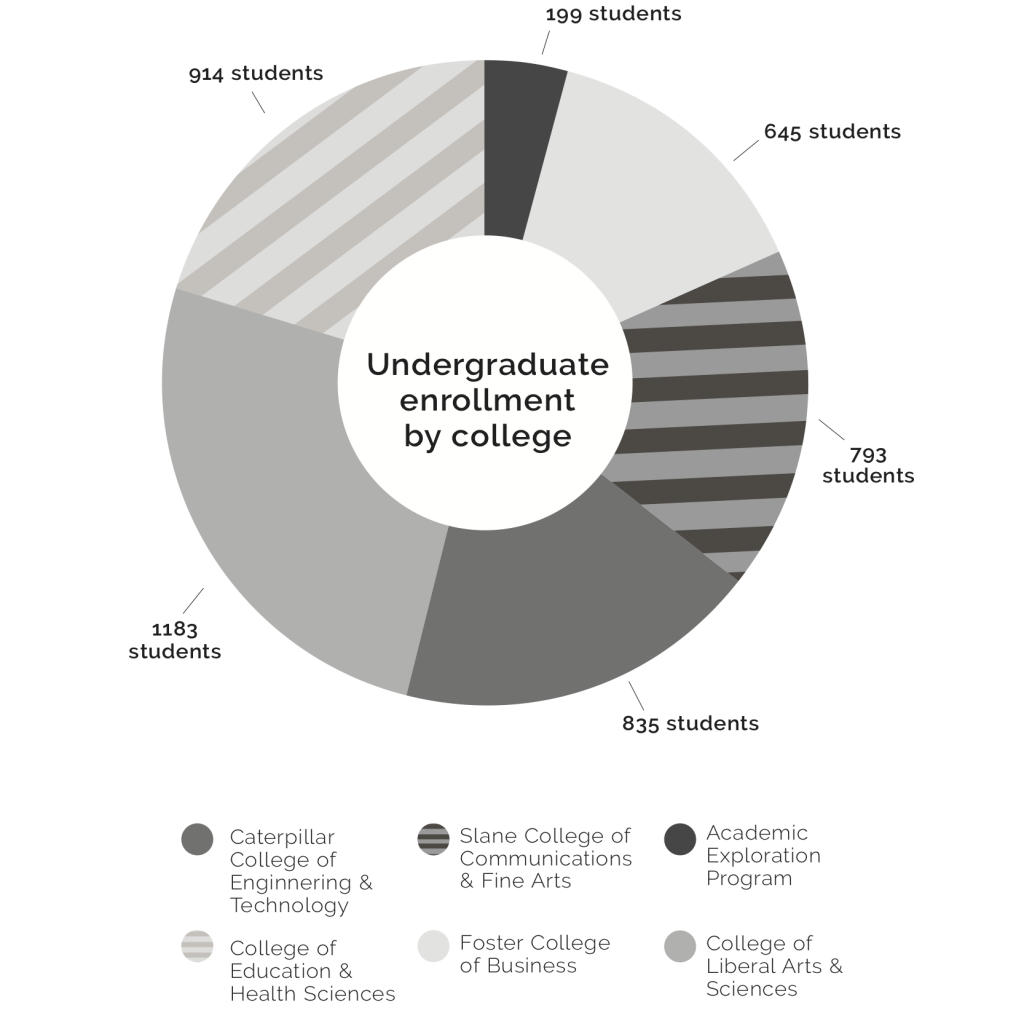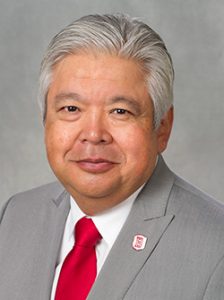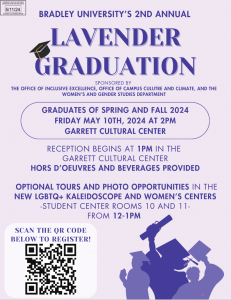
In late October, the university released its annual statistical report, providing more detailed breakdowns of its enrollment numbers.
Retention rate slowly recovering
After an extreme historical-low, undergraduate retention has increased slightly.
Of the 1,090 freshmen enrolled last fall, 925 returned to campus for the fall semester. This puts the first-year retention rate of the class of 2022 at 84.9 percent, up from the 82.3 percent first-year retention for the class of 2021.
This demonstrates the slow climb back toward the previous numbers but is still much lower than the 86.5 percent average it was from 2015 to 2017.
“We spent a lot of time studying the retention numbers from last year, from most every angle we could imagine, to try to determine what happened with the entering 2017 class retention rate,” vice president for student affairs Nathan Thomas said.
In response, the university has developed initiatives this fall like the STEM Scholars program funded by Caterpillar Inc. and an ESL (English as a second language) program. Student affairs is also conducting the “First 1897 Challenge,” an opportunity for first-year students to win prizes for attending university-sponsored events.
A sociology senior seminar course is also currently conducting research on why students stay at Bradley.
“This is an exciting project and will allow us to also look at capitalizing on the things we do well as an institution,” Thomas said.
Shifts in enrollment by college
The only college to see an increase in total undergraduate enrollment this year is the College of Liberal Arts and Sciences. It increased from 1,087 students in 2018 to 1,223 students in 2019.
According to Christopher Jones, the dean of the College of Liberal Arts and Sciences, the college has seen a 92 percent growth in incoming freshmen since 2015. In 2015, there were 167 freshmen. This year, the number has increased to 330.
“I attribute this growth to the college’s strong faculty and programs, its excellent coordinator Mr. Lee Newton, its strong partnership with BU’s Division of Enrollment Management and the fine work of our faculty on admissions’ visit days,” Jones said.
Every other college’s enrollment decreased, especially the Academic Exploration Program. From 2016-2018, the program had an average enrollment of 262 and fell to 199 this year.
According to Justin Ball, the vice president for enrollment management, this has nothing to do with recruitment efforts, and the decrease isn’t necessarily a bad thing.
“Given the focus of prospective students and their parents on outcomes, placement rates and similar metrics, students may be choosing to make major decisions with more direct paths to specific career or graduate school outcomes,” Ball said. “There are more options than ever before for students [who are] undecided on their major when entering college.”
The Graduate Program becomes more gender-divided
More graduate programs are being offered online than ever before at Bradley, but they’re also furthering an already-present gender divide in post-baccalaureate education.
According to the Bradley’s statistical profile, the graduate school is made up of 76 percent females and 24 percent males.
The number of females surpassed males in 2016 at 59 percent, and has been steadily increasing since.
According to the National Center for Education Statistics, female students made up 59 percent of total post-baccalaureate enrollment.
Associate provost and dean of the graduate school, Jeff Bakken, said the divide is largely because the most populated programs at Bradley right now are gendered.
Bakken said achieving gender balances for the graduate program isn’t necessarily a goal.
“We don’t try to recruit [certain genders]; we’re trying to get students,” Bakken said. “We’re trying to get students whether they’re male or female. To me it doesn’t matter. And nursing will never get the same number of men as women just because there’s more women in nursing.”
Bakken explained that this is just the nature of these programs.
“Engineering you consider traditionally a more male populated, and nursing and counseling programs online are traditionally much higher female,” said Rachel Webb, director of on-campus graduate admissions.
According to Bakken, the online program has 728 nursing students and 200 counseling students.
Fewer international students in the graduate school
The number of international students in graduate programs has seen a drop.
According to the 2019 Statistical Profile, only 7 percent of 1,293 graduate students are from outside the United States. This number is down from only 8 percent of 1,276 students in 2018, but was 17 percent of 1,195 students in 2017.
This is similar to the national trend shown in the 2017-2018 Open Doors Survey, which found that new international student enrollment fell 7 percent at the graduate level.
Bakken said this is a direct result of immigration policies in place at the federal level, and has resulted in a lot fewer students enrolled in on-campus graduate programs.
“If we could get international students to come again, they want to come and they want to get out of India, for example, and come to the United States,” Bakken said. “It’s seen as a highly regarded thing, to get a degree from a U.S. institution, so I hope that it will increase and we will see more international students.”
Bakken said the graduate program hired a recruiter in India to try to help them get more students. He hopes to see an increase in the coming years.




